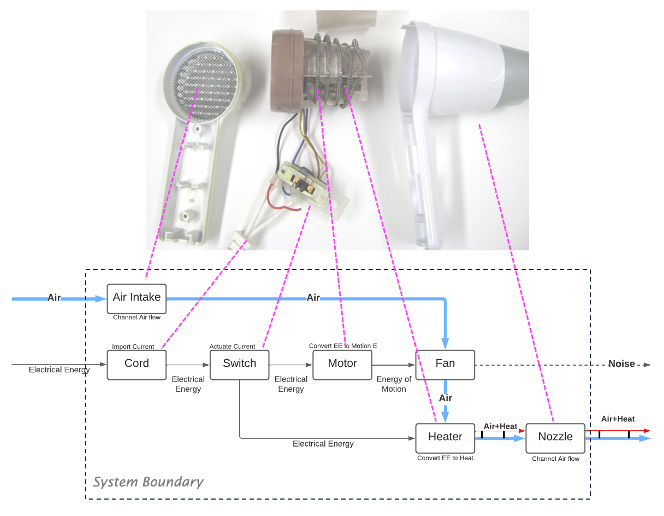Chapter 3 How it Works: Components and Subfunctions
Major Topics
Individual components carry out some subset of the transformations needed to produce the overall functions of the technological system.
A way to describe “how something works” is to describe the major system components and their interactions.
A network diagram with components as nodes and interactions as links is one way to visually depict a technological system.
Chapter 3 Overview
A technological system accomplishes its overall function by means of its constituent parts or components.
The overall function of a technological system is divided into a network of subfunctions within the system.
Components are the physical elements that embody the subfunction transformations. Components interact with other components.
The interaction of two components requires the exchange of the same type of material, energy, or information.
One approach to describing how a technological system works is to identify the major components, the subfunctions carried out by these components, and the principal component interactions that transform system inputs to outputs.
Some components or combinations of components may have the function of controlling system behavior or operation.
In some instances, the terms assembly or subassembly may be used to describe combinations of components that accomplish well-defined functions but do not appear as a completed system.
Established components exist to provide some commonly used well-defined subfunctions. The components can be used to achieve desired subfunctions in any technological system.
Component characteristics can be varied or adjusted to match system requirements.
Operation of a technological system involves functions of both critical and less-critical contributions to overall system function.
Through an assemblage of components, a technological system can provide a function or utility that is not possible for any single component to accomplish. The combination produces a result that exceeds the usefulness of the individual parts.
Chapter 3 Abstract
3. How it Works: Components and Subfunctions
A technological system accomplishes its overall function by means of its constituent parts or components. The overall function of a technological system is divided into a network of subfunctions occurring within the system. Components are the physical elements that embody the subfunction transformations. Components interact with other components. The interaction of two components requires the exchange of the same type of material, energy, or information. One approach to describing how a technological system works is to identify the major components, the subfunctions carried out by these components, and the principal component interactions that transform system inputs to outputs. Some components or combinations of components may have the function of controlling system behavior or operation. In some instances, the terms assembly or subassembly may be used to describe combinations of components that accomplish well-defined functions but do not appear as a completed system. Established components exist to provide some well-defined subfunctions. The components can be used to fulfill desired subfunctions in any technological system. Component characteristics can be varied or adjusted to match system requirements. Operation of a technological system involves functions of both critical and less-critical contributions to overall system function. Through an assemblage of components, a technological system can provide a function or utility that is not possible for any single component to accomplish. The combination produces a result that exceeds the usefulness of the individual parts.
